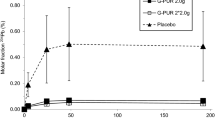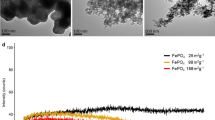Abstract
Background: Fractional absorption of zinc (Zn) has been measured using dual isotopes of Zn given simultaneously. An oral test dose and an intravenous (i.v.) reference dose are administered, followed by the measurement of the double isotopic enrichment (E) in urine 48 h after administration. We postulated that an estimate of the %E in urine for a given i.v. dose of Zn may be used to eliminate the need for venipuncture and the second Zn isotope.
Objectives: To determine a constant (k) for the Zn enrichment of urine after i.v. administration of a dose of labeled Zn in Zn-replete subjects. To use ‘k’ to calculate fractional absorption of Zn, and to compare these values to values obtained using the standard dual isotope method.
Design: Single-arm cohort.
Setting: The Hospital for Sick Children, Toronto, Canada.
Subjects: Twenty-three healthy adults were recruited from the Metropolitan Toronto area. Seventeen subjects completed the study.
Interventions: A 2.29 mg i.v. dose of 67Zn followed immediately by a 2.50 mg oral dose of 70Zn.
Results: Population mean percentage enrichment (%E) of 67Zn in urine was 1.43 (95% CI 1.26, 1.60). The ratio of the i.v. dose to mean %E in urine (k) was estimated to be 1.60 mg (95% CI 1.43, 1.82). There was no difference in the mean fractional absorption of Zn calculated using the single compared to the dual isotope method: 12.58% (95% CI 2.22, 22.94) vs 12.68% (95% CI 4.52, 20.85), respectively (P=0.89). The correlation coefficient between the two methods was 0.81 (P<0.0001).
Conclusions: The dual isotope method may be replaced by using a constant (k) and a single oral dose of isotopic-enriched Zn to estimate fractional absorption of Zn within a population.
Sponsorship: Gerber Products Company, Fremont, MI.
European Journal of Clinical Nutrition (2001) 55, 1098–1103
This is a preview of subscription content, access via your institution
Access options
Subscribe to this journal
Receive 12 print issues and online access
$259.00 per year
only $21.58 per issue
Buy this article
- Purchase on Springer Link
- Instant access to full article PDF
Prices may be subject to local taxes which are calculated during checkout
Similar content being viewed by others
References
Abrams SA (1999) Using stable isotopes to assess mineral absorption and utilization by children Am. J. Clin. Nutr. 70 955–964
Babcock AK, Henkin RI, Aamodt RL, Foster DM & Berman M (1982) Effects of oral zinc loading on zinc metabolism in humans II: in vivo kinetics Metabolism 31 336–347
Bland JM & Altman DG (1986) Statistical methods for assessing agreement between two methods of clinical measurement Lancet i 307–310
Bland JM & Altman DG (1995) Comparing methods of measurement: why plotting difference against standard method is misleading Lancet 346 1085–1087
Bland JM & Altman DG (1999) Measuring agreement in method comparison studies Stat. Meth. Med. Res. 8 135–160
Friel JK, Naake VL Jr, Miller LV, Fennessey PV & Hambidge KM (1992) The analysis of stable isotopes in urine to determine the fractional absorption of zinc Am. J. Clin. Nutr. 55 473–477
Friel JK, Andrews WL, Simmons BS, Miller LV & Longerich HP (1996) Zinc absorption in premature infants: comparison of two isotopic methods Am. J. Clin. Nutr. 63 342–347
Hambidge KM, Krebs NF & Miller L (1998) Evaluation of zinc metabolism with use of stable-isotope techniques: implications for the assessment of zinc status Am. J. Clin. Nutr. 68 410S–413S
Hillman LS, Tack E, Covell DG, Vieira NE & Yergey AL (1988) Measurement of true calcium absorption in premature infants using intravenous 46Ca and oral 44Ca Pediatr. Res. 23 589–594
Janghorbani M, Ting BT & Fomon SJ (1986) Erythrocyte incorporation of ingested stable isotope of iron (58Fe) Am. J. Hematol. 21 277–288
King JC (1990) Assessment of zinc status J. Nutr. 120 (Suppl 11), 1474–1479
Lowe NM, Shames DM, Woodhouse LR, Matel JS, Roehl R, Saccomani MP, Toffolo G, Cobelli C & King JC (1997) A compartmental model of zinc metabolism in healthy women using oral and intravenous stable isotope tracers Am. J. Clin. Nutr. 65 1810–1819
Lowe NM, Woodhouse LR, Matel JS & King JC (2000) Comparison of estimates of zinc absorption in humans by using 4 stable isotopic tracer methods and compartmental analysis Am. J. Clin. Nutr. 71 523–529
Miller L, Hambidge K, Naake V, Hong Z, Westcott J & Fennesey P (1994) Size of the zinc pools that exchange rapidly with plasma zinc in humans: alternative techniques for measuring and relation to dietary zinc intake J. Nutr. 124 268–276
Wastney M & Henkin R (1989) Calculation of zinc absorption in humans using tracers by fecal monitoring and a compartmental approach J. Nutr. 119 1438–1443
Yergey AL, Abrams SA, Vieira NE, Eastell R, Hillman LS & Covell DG (1990) Recent studies of human calcium metabolism using stable isotopic tracers Can. J. Physiol. Pharmac. 68 973–976
Zlotkin S & Casselman C (1990) Urinary zinc excretion in normal subjects J. Trace Elem. Exp. Med. 3 13–21
Acknowledgements
We thank Ms Sonya Dekster for her help in organizing and conducting the study and Ms Anna Christotfides for her editorial support. We would also like to acknowledge the technical assistance of Dr Yakov Kapusta and Activation Laboratories Ltd for their expertise in ICP-MS.
Author information
Authors and Affiliations
Corresponding author
Rights and permissions
About this article
Cite this article
Yeung, G., Schauer, C. & Zlotkin, S. Fractional zinc absorption using a single isotope tracer. Eur J Clin Nutr 55, 1098–1103 (2001). https://doi.org/10.1038/sj.ejcn.1601273
Received:
Revised:
Accepted:
Published:
Issue Date:
DOI: https://doi.org/10.1038/sj.ejcn.1601273
Keywords
This article is cited by
-
Zinc Absorption from Fortified Milk Powder in Adolescent Girls
Biological Trace Element Research (2015)



